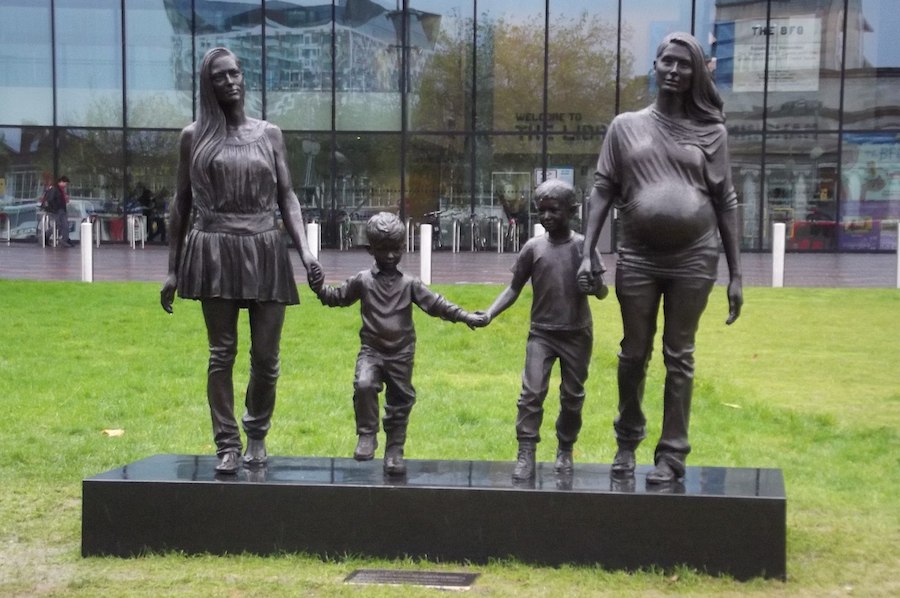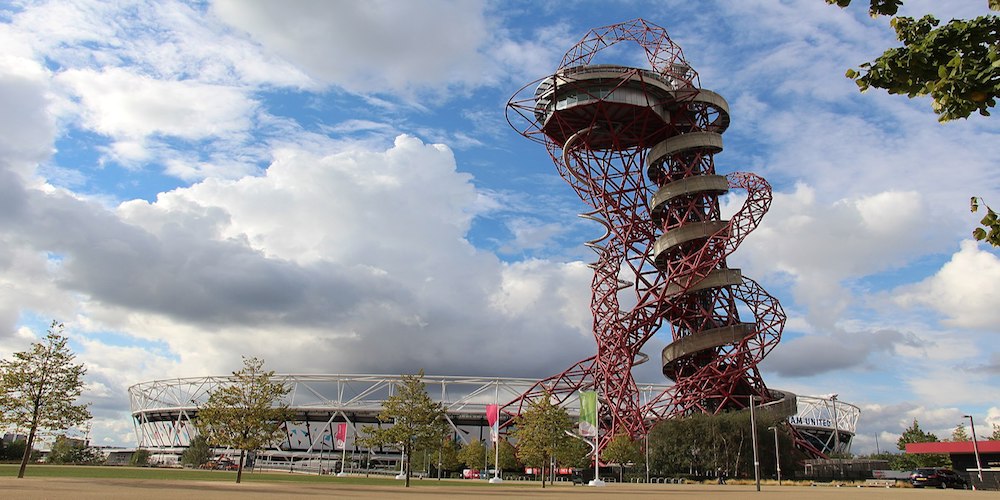
9. Gillian Wearing ordinary family statue Birmingham library
Lacking her usual wit, Gillian Wearing loses her cool! This £100,000 bronze statue of an ordinary family, the Joneses, was recently unveiled in a prime spot outside Birmingham’s library.
Gillian Wearing is a Turner Prize winning English photographer and video artist. She has described her working method as ‘editing life’. By using photography and video to record the confessions of ordinary people, her work explores the disparities between public and private life, between individual and collective experience. Wearing has cited the influence of English fly-on-the-wall documentaries, such as Michael Apted’s 7-up and the 1970s documentary The Family. Signs that Say What You Want Them to Say and Not Signs that Say What Someone Else Wants You to Say (1992–3), made shortly after her graduation from Goldsmiths College in 1990, was produced by approaching people on London streets, asking them to write something on a card and then photographing them as they displayed it. Private lives were given a sudden and revealingly painful exposure: a policeman holds a card reading ‘Help!’. With the introduction of video and more in-depth interviewing of her subjects, Wearing began to use adult actors lip-synching the recorded confessions of children, and subjects, solicited from advertisements placed in newspapers, making confessions while wearing masks. The introduction of actors signalled an increasingly dramatic element in her work and a shift away from the use of documentary techniques. The 1999 video I Love You used actors to explore the theme of strong private emotion spilling out into a semi-public domain. The scene of a drunken woman repeatedly screaming ‘I love you’ is played out a number of times, the reaction of her three friends differing each time. Wearing won the Turner Prize in 1997.

